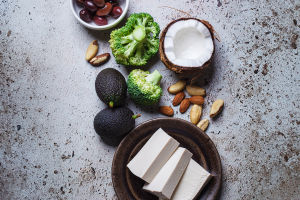We've all heard it since we were kids: "Eat your fruits and veggies!" But now, more than ever, we need to take that advice seriously. Fruits and vegetables are packed with the nutrients our body needs to stay strong, energized, and protected.
From vitamins and minerals to fiber and antioxidants, these natural foods support nearly every system in our body.
Let's explore what they offer and how we can eat them in the smartest, most delicious way.
What Nutrients Do They Provide?
Different fruits and vegetables bring different benefits. Here's what we get when we eat a colorful variety:
• Vitamin C (in oranges, kiwi, bell peppers): Boosts our immune system and helps with wound healing
• Vitamin A (in carrots, sweet potatoes, spinach): Supports vision and skin health
• Folate (in leafy greens and avocados): Helps with cell growth and repair
• Potassium (in bananas, potatoes, and tomatoes): Maintains healthy blood pressure
• Fiber (in apples, broccoli, pears): Supports digestion and keeps us full longer
• Antioxidants (in berries, grapes, kale): Fight off harmful free radicals and reduce inflammation
The more variety we include, the more complete our nutrition becomes.
Should We Eat Them Raw or Cooked?
That depends on the type of fruit or vegetable. Some are better raw, while others give us more benefits when cooked.
• Best raw: Bell peppers, cucumbers, spinach, lettuce, tomatoes, berries
• Better cooked: Carrots, mushrooms, tomatoes (lycopene becomes more available), kale, and sweet potatoes
Cooking can soften fiber, making digestion easier, and in some cases, help our body absorb nutrients better. Steaming and stir-frying are great methods to keep nutrients intact while adding flavor.
Don't Peel Too Quickly
The skin of many fruits and vegetables contains extra fiber, antioxidants, and vitamins. Apples, cucumbers, and carrots are good examples where eating the skin (after proper washing) gives us more benefits.
Of course, for certain items like pineapples or thick-skinned vegetables, peeling is necessary. But whenever it's safe and clean, keeping the peel helps us get more from every bite.
Fresh, Frozen, or Dried?
Many of us think fresh is always best—but that's not always true. Here's how we can choose:
• Fresh: Great when in season and locally grown
• Frozen: Picked and frozen quickly, often with nutrients locked in. A great option when fresh ones aren't available
• Dried: Concentrated in sugar and calories, but still useful in small amounts—for example, raisins in oatmeal or dried mango as a snack
We should just watch out for added sugars and preservatives, especially in dried or packaged fruits.
How Much Do We Need?
Most health experts suggest at least 5 servings of fruits and vegetables a day—ideally a mix of both. One serving is about:
• 1 cup of raw leafy greens
• ½ cup of cooked veggies
• 1 medium piece of fruit
• ½ cup of chopped fruit
It's easier than it sounds! A banana in the morning, salad at lunch, veggie stir-fry at dinner, and some berries as a snack can already hit the target.
Tips to Make It a Habit
Here are a few easy ways we can eat more fruits and vegetables every day:
• Add spinach or mushrooms to scrambled eggs
• Snack on carrot sticks or cherry tomatoes
• Toss extra veggies into noodles, fried rice, or sandwiches
• Blend fruit into smoothies
• Prepare veggie soup in batches for the week
It's not about perfection. It's about building small, tasty habits.
Let's Eat Colorfully
The more colors we eat, the more nutrients we get. A rainbow plate isn't just pretty—it's powerful. Each color group offers different protective benefits, from heart health to brain support.
What's in Your Basket?
Have you eaten something green, red, or orange today? If not, what can you add to your next meal to balance it out?
Whether you're just starting or already eating healthy, every little step counts. Let's enjoy the taste, crunch, and color of fruits and veggies together—and give our body the fuel it loves.


